M.Goodall, A.Tagg British Aircraft before the Great War (Schiffer)
Deleted by request of (c)Schiffer Publishing
MARTIN-HANDASYDE monoplanes (No.6) and variants 1912-1914
After the loss of Gilmour in No.5, there were no reports of flying by Martinsyde until 27 June 1912, when Gordon Bell flew a new monoplane with Antoinette engine. This was soon followed by a different type of monoplane, designed specifically for the Military Trials of August 1912, (No.7) and so for the first time two Martin and Handasyde aircraft were flying at Brooklands.
Some confusion can arise from the lack of clarity of the early reports and from the use of the description 'Military Monoplane' for (No.6) at present under consideration. This arose from a War Office contract reported to be for four aircraft, against which (No.6) was the first to be built. The need for a separate design probably arose when the conditions of use were made known later.
These aircraft were being produced at the time of a number of disasters to monoplanes of various types, which resulted in the War Office ban on their use by the RFC and although it is possible that two Martin and Handasyde monoplanes were delivered to Farnborough, they were not used by the Service, one actually being used as a gunnery target at Shoeburyness.
The company was greatly committed to the monoplane design, notwithstanding the loss of Gilmour on (No.5) and the War Office ban, they continued to develop and fly variants of the type into early 1914. There were several setbacks along the way, including the fatal crash of Edward Petre in gusty weather at Marske on 24 December 1912, on the Antoinette powered aircraft completed the month before. The accident report stated that the wings collapsed, and suggested an investigation into the design was required. Although the firm disagreed with this finding a change to box type spars was made in a new machine with Laviator engine described in February, prior to its appearance at Olympia in March 1913 on the stand of T.B. Andre and Co., the successors of Trier and Martin as selling agents. This engine was unsatisfactory and was changed for an Austro-Daimler in April, and the aircraft was then flown by Gordon Bell on 8 May 1913 for the first time. In his hands it was remarkably maneuverable and achieved speeds up to 82mph, but Bell overdid the aerobatics on returning from Eastchurch to Brooklands on 13 June 1913 and the machine was destroyed and the passenger killed.
A further Austro-Daimler powered machine was flying at Brooklands in September 1913, in the hands of Barnwell, who competed in races at Brooklands in it and in the Aerial Derby, where he obtained second place at a speed of 72.5 mph over ninety-five miles.
The last monoplane to be completed flew in February 1914 and may have been intended to become a floatplane. This again had an Austro-Daimler engine and was flown by Barnwell initially, and later by R.R. Skene and V. Waterfall. The machine was at Shoreham at the outbreak of war and was commandeered by government officials, but apparently was not flown again.
No doubt these machines incorporated many improvements, and there are few features to distinguish one from the other, also contemporary information is sparse. Apart from the engine changes, there were less obvious alterations, such as the large-scale use of duralumin in parts of the structure, and changes to the undercarriage springing by enclosing the rubber springing inside the central tube. Serial No.278 was one RFC machine which had rubber cord springing on the diagonal arms, as on the Military Trials aircraft.
In some cases the extent of the plywood covering, or reinforcing, of the rear fuselage was varied. The 1913 Show machine seems to have fabric over the girder only in this area, whereas the 1913 Aerial Derby machine had plywood and a small area only covered by fabric.
The last two Austro-Daimler machines rested on their tailskids, when on the ground, indicating a change to the weight distribution. Particular attention was paid to the final machine, which had fairings added to the undercarriage and bracing posts, together with improved cowlings and decking. A fore and aft strut connected the lower ends of the kingposts at mid-span. Two pairs of new wings tried in June proved to be disappointing.
Power:
65hp Antoinette eight-cylinder water-cooled vee. Probably used in three aircraft.
80hp Laviator (Dansette-Gillet system) eight-cylinder water-cooled vee. Used in one aircraft only, replaced by an Austro-Daimler.
120hp Austro-Daimler six-cylinder inline watercooled, probably used in 3 aircraft.
Data
Span 42ft 6in
Chord 7ft
Length 35ft 4in
Propeller 8ft 10in diameter Regy
Area 286 sq ft
Weight 1,100lb
Weight allup 1,760lb
Data is for 1913 Show machine with Laviator.
MARTIN-HANDASYDE monoplane (No.7) Military Trials type
This machine was one of two flying at Brooklands in mid-July 1912, but it left by road for Larkhill on 20 July 1912. Although it was apparently satisfactory at Brooklands, the aircraft was soon let down by its engine at Larkhill and, apart from completing the assembly test, made only one or two flights in windy conditions. In addition the aircraft was overweight.
There were a few features to distinguish the Military Trials machine from the No.6 type. The Chenu engine incorporated a two to one reduction gear and drove a four-bladed propeller. The coolant radiator was shaped in the form of a saddle and fitted on top of the fuselage above the wing. The main undercarriage post, and the kingposts, were enclosed in streamlined fairings, however four rubber spring cords were now incorporated in both diagonal arms and these remained exposed. The object of the stronger springing being to satisfy the ploughed field case, specified in the rules of the contest. A propeller-driven pump to pressurize the main fuel tank was mounted on the undercarriage vertical post.
After the Trials the Chenu engine was replaced with an Antoinette and Petre continued flying the aircraft until it is believed to have been wrecked on 24 October 1912, after a forced landing.
Power:
75hp Chenu six-cylinder inline incorporating a 2 to 1 reduction gear.
65hp Antoinette eight-cylinder water-cooled vee.
Data
Span 42ft 6in (Flight 42ft)
Length 38ft
Area 310sqft
Weight 1,250lb
Weight allup 1,800lb
Speed 75mph
MARTIN-HANDASYDE Waterbus monoplane
This machine was reported to be under construction at Brooklands in 1913. It was not completed as a seaplane, with proposed center float and balancing floats at the kingposts, but may have been completed as the last land-plane of (No.6) type in 1914. Ailerons were to be fitted instead of wing warping.
Power: 120hp Austro-Daimler eight-cylinder water-cooled vee.
P.Lewis British Aircraft 1809-1914 (Putnam)
Martin-Handasyde Military Monoplane
During 1912 the War Office ordered four examples of a new military monoplane from Martin and Handasyde. Two were delivered, but neither was flown after receipt. The machine was of the two-seat tractor type and was powered by the eight-cylinder 65 h.p. Antoinette engine. The firm regarded the Antoinette as a good power plant, and returned to using it after testing the Gnome and J.A.P. units in their other designs. The machine still embodied typical features of the 1909 type of Antoinette monoplane some two years after such a style had been in its heyday.
The triangular-section fuselage accommodated its crew in tandem in one undivided cockpit. The engine was cooled through the medium of aluminium tubing condensers, 13 ft. 6 ins. in length and nearly 70 sq. ft. in area, which were mounted on the sides of the fuselage. A steel tube of large diameter, incorporated in the fuselage just forward of the C.G., formed the central support for the strong undercarriage unit. The main tube carried inside it the rubber shock-absorbing system. The engine was given an aluminium cowling, which fitted it closely, and the rest of the fuselage was plywood-covered for strength over its four longerons. A great improvement over the previous Martin-Handasyde designs was the provision of a coaming about the cockpit area, bestowing reasonable protection for the occupants. Warping lateral control was applied to the wings, the tips of which were also washed-out for better automatic stability.
An improved version of the type, fitted with the more powerful eight-cylinder 80 h.p. Laviator engine, was exhibited at the 1913 Aero Show at Olympia.
SPECIFICATION
Description: Two-seat tractor monoplane. Wooden structure, fabric covered.
Manufacturers: Martin and Handasyde Ltd., Trinity Works, Camberwell.
Power Plant: 65 h.p. Antoinette, 80 h.p. Laviator.
Dimensions: Span, 42 ft. 6 ins. Length, 35 ft. 4 ins. Wing area, 290 sq. ft.
Weights: Empty, 1,100 lb. Loaded, 1,760 lb.
Performance: Maximum speed, 70 m.p.h. Cruising speed, 64 m.p.h.
Price: ?1,350.
Martin-Handasyde Military Trials Monoplane
The Military Trials Monoplane of 1912 was entered as No. 17 and was similar in appearance to the military monoplane produced for the War Office. The machine seated two in tandem in separate cockpits and was fitted at first with an 80 h.p. Dansette-Gillet engine, which was replaced by the 90 h.p. Chenu for the Trials, during which C. Gordon Bell was the pilot. The next engine used was a 65 h.p. Antoinette, and this was followed in 1913 by a 120 h.p. Austro-Daimler, which gave a top speed of 75 m.p.h. On 13th June, 1913, the machine was crashed by Bell at Brooklands during low flying, killing the passenger, Lt. J. R. B. Kennedy. Span, 42 ft. Length, 38 ft. Weight empty, 1,250 lb. Weight loaded, 1,800 lb. Maximum speed, 75 m.p.h.
Martin-Handasyde 1913 Monoplane
Similar in appearance to the 1912 Military Trials two-seater, this machine was completed at Brooklands in August, 1913, being tested during the following month by R. H. Barnwell and taking second place in the second Aerial Derby on 20th September, 1913. The engine was the 120 h.p. Austro-Daimler, and the machine was flown by Barnwell in the London- Brighton-London race of 8th November, 1913. At the end of the year it was modified with a pair of small wheels on the front of the undercarriage skid. The centre undercarriage pylon was faired to a streamline section. Early in 1914 the machine was being flown at Brooklands by 2nd Lt. Vincent Waterfall, who had gained his Royal Aero Club Aviator's Certificate No. 461 on 22nd April, 1913, on a Vickers at Brooklands. A speed of 97 m.p.h. was recorded with the aircraft in a test carried out at Farnborough. In February, 1914, it was involved in an accident when the small front wheels of the undercarriage came off and smashed the propeller.
Martin-Handasyde Waterbus
The Waterbus Monoplane was reported to be under construction by Martin and Handasyde at Brooklands during 1913.
Jane's All The World Aircraft 1913
MARTINSYDE. Messrs. Martin & Handasyde, Brooklnnds, Weybridge, Surrey. Output capacity: about 20 per annum.
1912. 1913.
Model and date. Mono. 2-seater. Mono. 2-seater.
Length.................feet(m.) 35-1/3 (10.75) 35 (10.65)
Span...................feet(m.) 42? (12.95) 42? (13)
Area...............sq.feet(m?.) 290 (27) 285 (26.50)
Weight, total........lbs.(kgs.) ... 1212 (550)
Weight, useful.......lbs.(kgs.) ... 551 (250)
Motor......................h.p. 65 Antoinette 80 Laviator
Speed, max..........m.p.h.(km.) 63 (102) 78 (125)
Speed,min...........m.p.h.(km.) ... ...
Number built during 1912 ... ...
Notes.--Wood construction. Landing: wheels and one skid. Controls: warping wings and rear elevator. Triangular body. The two models are very nearly identical.
Журнал Flight
Flight, August 10, 1912.
THE MILITARY AEROPLANE COMPETITION - THE MACHINES.
THE MARTIN HANDASYDE MONOPLANE.
IN general outline this machine has much in common with the well-known but now almost extinct Antoinette monoplane. At Salisbury it has created a very good impression, for not only are its general lines extremely pleasing to the eye, but the materials and workmanship used in its construction are of the very first order. Its main body, in appearance, is slim, but of its strength there is not the slightest doubt. Its section is that of a triangle with its apex clipped. Above the body in front is applied a streamline superstructure for the protection of pilot and passenger, and for the reduction of the head resistance that they would otherwise cause. A section of this superstructure is formed by the radiator which fits saddle fashion across the top of the body. Totally enclosed an front is mounted the 75-h.p. Chenu engine, driving a Chauviere propeller. Each wing is built about two spars, which are hollow box girders formed of ash and three-ply wood, screwed and glued together. Where clips are applied the hollow spar is filled solid, to give greater strength at these important points. There is very little camber in the wings, and from root to tip the camber diminishes regularly - it washes out as Brooklands people say. That section of the wing by the side of the pilot's seat is cut away to allow the pilot a good view directly beneath him. King posts, carefully moulded to an approximate streamline with aluminium sheeting, brace the wings. The lower chassis mast is streamlined in the same fashion, and to further decrease resistance, disc wheels are fitted to the landing gear. This section of the machine resembles closely that employed by the Antoinette. Its action, however, is quite different. The two landing wheels are carried one at each end of a pair of axles which meet together and are pivoted at the main chassis mast. Considering one half of the chassis, the axle and the chassis mast form two sides of a triangle, of which the third side is formed by a unit which resists compression. This unit is composed of a pair of tubes one sliding inside the other. One end of the lower tube is pivoted to the axle, the upper end of the top tube is pivoted to the chassis mast, and the two free ends connected by rubber shock-absorbers. Two radius rods of Duralumin are provided to take the landing "drift."
Main characteristics:-
Overall length 38 ft.
Speed 75 m.p.h.
Span 42 ft.
Weight of machine without cornplement or fuel 1,350 lbs.
Area 310 sq.ft.
Flight, October 26, 1912.
THE MARTIN-HANDASYDE AT BROOKLANDS.
THAT very striking full-page picture in last week's issue of FLIGHT, showing a monoplane crossing above the winning post at Brooklands during the course of motor cycle racing on the track, was a Martin-Handasyde machine, arid we tender our apologies to this firm and to Messrs. Vickers, Ltd., whose name was mentioned in the inscription, for the mistake. As a matter of fact, our photographer, who happened to be taking pictures of the motor racing for our sister journal the Auto, had seen a Vickers monoplane pass several times above his head, but so placed with respect to the light that he could not photograph it. A little later on, however, a machine came into the view that is recorded by the illustration and our photographer, without noticing that it was not the same machine as before, recorded it as a Vickers in his notes, and, unfortunately, the slip was not noticed until too late.
The Martin-Handasyde monoplanes have been flying exceedingly well again down at Brooklands, as they did before the Military Trials, and it was just one of those several disappointments of the month on Salisbury Plain that, at the very time when the eyes of the world of flight were ready to take a particular interest in everything British, the Martin-Handasyde monoplane, itself one of the best of British constructions, should have been hopelessly let down by the chronic weakness of a French engine. There is no doubt that the Martin-Handasyde machine is deserving of the serious consideration of anyone who is in a position to purchase aeroplanes, for not only is it beautifully constructed but it is a splendid machine in the air. Gordon Bell, who came over from France especially to fly the Martin-Handasyde in the Military Trials, did so more because the machine was a pleasure to handle than from any other reason, and on the few occasions when the engine permitted him to stay off the ground, his flying was superb. In the wind tests he led the field under conditions that were distinctly courageous, and his fine performance inspired others to successful simulation when they might have been less anxious to act the pioneer.
Among monoplanes it is a machine of comparatively large area, and among flying machines of all types it is easily one of the most graceful and beautiful objects to see in flight. More important than these facts is the interest that attaches to the machine as an engineering structure, especially in these days of the ban on monoplanes. The trussing of the wing spars is characterised by the presence of king posts, which are absent in a similar capacity from any other monoplane with which we are familiar. The object of a king post is to enable the lift wires to be carried at a reasonable slope so that they do not impose a big compression strain on the spars, and another point of importance on the Martin-Handasyde machines is that the wires in question are anchored to the foot of a very substantial mast, which is carried vertically through the body and forms the apex of the overhead cabane. The divided axle of the landing chassis is hinged to the mast, which is protected by a skid, and a very well thought out rubber spring suspension, having an abutment against the floor of the body, also relieves the mast of shock. The object of this arrangement is to avoid attaching vital wires like the warp wires to members of the undercarriage that are likely to get bumped about or strained against the ground when landing. It is a necessity of monoplane design that the warp wire attachments should project below the level of the body work of the machine and thus be exposed to accidental damage, so it is all the more credit to the designers of the Martin-Handasyde that they should have recognised this natural limitation and have produced a sound engineering solution to the problem. We give this week a couple of detail sketches of the Martin-Handasyde machine entered for the Military Trials, which were made by our artist at Salisbury Plain, but have not hitherto been published. They will serve to accompany, if we may use the expression, the excellent photograph of the machine in flight over Brooklands that was published on page 933 of our last issue.
Flight, January 4, 1913.
THE MARTIN-HANDASYDE MONOPLANE.
SINCE the very early Brooklands days, when they were experimenting with an extremely pretty light monoplane, with a 35-h.p. J.A.P. engine, Messrs. Martin and Handasyde have kept firm to a design greatly resembling the Antoinette. Yet, although the Antoinette has lived its day, and now has almost died out, these two enthusiasts have gone forward, keeping true to their faith in their design, to a successful issue. No one will deny that the Martin-Handasyde monoplane as it stands to day is decidedly good as a flying machine, and one of the two prettiest monoplanes that are built in England.
In passing, there is an uncommon interest in the fact that this monoplane is driven by an Antoinette motor. Back in the days when there were more Antoinette monoplanes about than there are now, many were the attempts to get these machines to fly satisfactorily with a different engine. Gnome, E.N.V., and other motors were tried, but the results obtained were not comparable with those arrived at when the Antoinette motor itself was fitted. There seemed to have been a conspiracy between the two, the machine refusing to be put on its best behaviour unless it were companioned by the motor that was designed for it. It may be pure coincidence, it may be something to do with the fact that the same brain, M. Leon Levavasseur's, devised the two. And in support of this phenomenon, or whatever one likes to call it, we find that Mr. Handasyde, having in the course of his experiments fitted his machines with both J.A.P. and Gnome motors, returns to the Antoinette.
Whatever different opinions have been held in the past relative to the general design of the Martin-Handasyde machine, and it may be as well to remark that no machine ever appears in the aerodrome without giving rise to most conflicting opinions as to its worth, everyone has been unanimous in writing down the designer as one who is unusually clever at detail work, and enormously particular regarding the standard of workmanship that he demands from his working staff.
The backbone of the machine is a girder, of a section that may be likened to a triangle standing upon its truncated apex. It is its widest in the neighbourhood of the seats, and tapers away to either end like a boat. Its construction is interesting, for it is not built up in the usual manner with piano-wire bracing and transverse struts. There are four longerons of ash, which taper towards the tail. These are clamped down to a mould, and to them are screwed sheets of three-ply wood, from which, afterwards a diamond shaped piece is cut for lightness sake. Forward of the passenger's seat these sheets of three-ply wood are left solid, for there greater strength is required. The sheets having been applied, the fuselage is removed from the mould, covered with fabric, and doped, and the result is a body that is simple to construct, that is light, and that is extremely strong against longitudinal bending and lateral torsion.
The landing gear is quite Antoinette in its appearance, but in its action, quite different, for elastic shock absorbers are employed, whereas the Antoinette rejoiced in a compressed air suspension. The weight of the whole machine is taken in a single large diameter steel tube that is built into the body at a point just forward of the centre of gravity when the machine is fully loaded. Landing shocks are absorbed by the tube travelling vertically against the tension of rubber amortisseurs. A skid of hickory, shaped like a hockey stick, extends forward below the propeller to protect it, and in front is supported from the body by a stout ash strut.
Everything about the chassis strikes one as being very strong, and the same remark applies to the wings. They are each most intricately constructed about two hollow spars built up of ash and three-ply wood. At the wing root the front spar has a depth of 7 ins. and the rear one 6 ins., and they both taper to 3 ins. at the tip. Both are rigidly braced by spruce king-posts and stranded steel cable. For their shape they taper towards the tip, and there is noticeable a progressive "wash-out" in the camber. Covered and varnished, each wing weighs about 110 lbs.
So that the engine shall offer as little head resistance as possible, it is covered right in by aluminium sheeting, and the lines of this covering are continued on to a point to the rear of the pilot's seat by a fabric-covered superstructure of spruce and three-ply wood.
On either side of the body are the aluminium condensers, 13 ft. 6 ins. long, that recover the steam, which is formed in the cooling-jackets of the motor. They are most extraordinarily light, for the pair only weigh about 9 lbs., and have a cooling surface of nearly 70 square feet.
The tail of the machine takes a little share of the total lift, for although it is flat on the undersurface, it is cambered on top. Elevation is controlled by tail flaps. The motor, turning a Regy propeller of 2 m. 60 diameter and 1 m. 40 pitch at 1,150 r.p.m. on the ground, develops 60-h.p. at 1,300 r.p.m. in the air. She flies at 64 miles per hour.
Flight, February 22, 1913.
SOME MORE AEROPLANES AT OLYMPIA.
MARTIN-HANDASYDE (T. B. ANDRE AND CO., LTD.).
On the stand of Messrs. T. B. Andre and Co. is exhibited an excellent specimen of a Martin-Handasyde monoplane, equipped with an 8-cyl. Laviator motor of 80-h.p. Its lines, a matter, we should think, of general knowledge, greatly resemble those of the Antoinette monoplane. Scarcely two months since, we published a complete description, with several sketches, of a "Martinsyde" monoplane, which was practically identical with the one shown, excepting that it was driven by an engine of lower horse-power, a 60-h.p. Antoinette to wit. Let us, therefore, recall some of the remarks we printed then.
The body is boat-shaped, and has a cross-section which may be represented by a triangle standing upon its clipped apex. It is built up with four ash longerons, which are, in the process of construction, clamped down to a former.
Held in their correct positions by this ormer or mould, sheets of three-ply wood are bolted to either side. The sheets aft of the passenger's seat are then lightened by cutting away a diamond shaped piece from the centre of each. Those forward of that seat are left untouched, for at that part of the body much greater strains have to be borne. In front the motor is bolted to the top two longitudinal members of the body, and it is almost completely covered in by an aluminium shield which lends to the fuselage more of a streamline form than it would otherwise possess. The lines of this shield are continued rearwards to a point behind the pilot's seat, by a superstructure of spruce and three-ply wood, which, covered with fabric and sloped, assists in keeping the occupants sheltered. The pilot sits behind the passenger, and his hands rest on a wheel, mounted at the head of a vertical column, by which he controls the monoplane in flight. His feet operate the steering of the machine in the horizontal plane.
The wings are most carefully and strongly built, as may be seen from a specimen uncovered wing that is on exhibition on the stand. Its spars are of box section, with ash top and bottom strips and three-ply sides. Where they emerge from the sides of the body the front spars are 7 ins. in depth, tapering to 3 ins. at the tips. The rear spars are also 3 ins. deep at the tips, but are slightly smaller than the front spars at the roots. Both spars are braced by stranded cable stays passing over spruce king-posts erected approximately half way along their length. From the base of the front spar king-post an especially stout cable stay is run obliquely forward to a fitting on the front skid. This stay is designed to take the lift and drift of the wing. An equally strong stay proceeds obliquely backwards from the same point to a fitting on the landing wheel mast, which cable is provided, not only to take a share of the lift, but to prevent the wing - which, by the way, weighs something like 110lbs. - from straining forward owing to its own inertia when a landing is being made. Similar braces attached to the roots of the rear spar king-posts proceed to the main chassis mast, and these both take lift and operate the wing warping.
The landing chassis is similar to the Antoinette in appearance, and very similar to it in action, with the exception that, in the Martinsyde, the shocks of landing are absorbed by rubber springs in tension, whereas the Antoinette machine made use of a rather more elaborate system of pneumatic springing. From the point where the central chassis mast leaves the body on the underside, a long, curved hickory skid projects forward under the propeller, in which position it is stayed by a stout compression strut running downwards from the nose of the body. The relatively small landing wheels, shod with wide diameter pneumatic tyres, are mounted on a single axle, to the centre of which is mounted the massive steel tube which supports the main weight of the machine. The structure is made rigid laterally by two streamlined spruce struts.
The tail is purely a flat directive organ, taking no share of the lift. Two flap elevators are hinged to its rear edge. There is a vertical unbalanced rudder preceded by a fin, and the whole is protected by a neat tail skid.
The machine has been designed for a maximum speed of 70 miles per hour. Without passengers or fuel aboard, she turns the scale at 1,100 lbs., and, in flight, can carry a useful load of 660 lbs.
Flight, September 20, 1913.
THE AERIAL DERBY.
PILOTS AND HOW TO RECOGNISE THE MACHINES.
No. 12. The Martinsyde Monoplane
may be recognised by its long narrow fuselage and its tapering wings, which are cut off straight at the tips. Another characteristic feature whereby this machine may be identified is the provision of kingposts on the wings.
THE MACHINES, WITH SOME DETAILS.
No. 12. The 120 h.p. Austro-Daimler-Martinsyde monoplane. This is also an extremely fast 'bus - its speed being about 80 m.p.h. Built on similar lines to the old Antoinette monoplane, it is a most graceful machine. The water-cooled motor is placed in front of the pilot. The fuselage is of triangular section, with the apex pointing downwards, and is quite slender, though very strongly constructed. It is the only aeroplane entered for the race that has the king-post system of wing bracing.
Flight, May 22, 1914.
THE AERIAL DERBY.
THE PILOTS AND HOW TO RECOGNISE THE MACHINES.
No. 16. The 120 h.p. Martinsyde Monoplane.
This machine is easily distinguished from the other monoplanes entered by its tapering wings, which are set at a dihedral angle and by its long narrow fuselage.
THE MACHINES AND HOW TO RECOGNISE THEM.
No. 16. The 120 h.p. Martinsyde Monoplane differs in minor details only from the machine flown by Mr. R. H. Barnwell in last year's Aerial Derby, when, it will be remembered, Mr. Barnwell obtained second place, so that this machine should, barring mishaps, be in the first batch home. It is equipped with a 120 h.p. Austro-Daimler engine.
Flight, October 29, 1915.
CONSTRUCTIONAL DETAILS.-VIII.
<...>
An undercarriage differing entirely from any of the others shown was that of the Martinsyde monoplanes, and which is illustrated in one of the sketches. The weight of the whole machine is taken by a single large diameter steel tube that is built into the body at a point just forward of the centre of gravity. Landing shocks are taken by the tube travelling vertically against the tension of the rubber shock absorbers, the sliding collar guiding the tube on its travel. A skid of hickory, shaped like a hockey stick, extends forward below the propeller to protect it, and is supported in front by a stout ash strut coming down from the body.
<...>
 |
M.Goodall, A.Tagg - British Aircraft before the Great War /Schiffer/
|
| Martin-Handasyde Serial No.278 with Antoinette engine was supplied to the RFC in 1912.
|
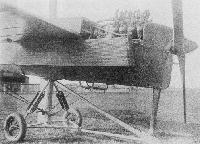 |
M.Goodall, A.Tagg - British Aircraft before the Great War /Schiffer/
|
| Martin-Handasyde produced two machines for the Military Trials. This version had an Antoinette engine.
|
 |
P.Lewis - British Aircraft 1809-1914 /Putnam/
|
| Martin-Handasyde Military Monoplane.
|
 |
Журнал - Flight за 1913 г.
|
| THE MARTIN HANDASYDE, as seen from different points around the machine.
|
 |
M.Goodall, A.Tagg - British Aircraft before the Great War /Schiffer/
|
| Martin-Handasyde produced two machines for the Military Trials. This version was fitted with the unsatisfactory Chenu engine, the other had an Antoinette.
|
 |
P.Lewis - British Aircraft 1809-1914 /Putnam/
|
| Martin-Handasyde Military Trials Monoplane with 90 h.p. Chenu.
|
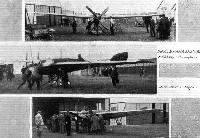 |
Журнал - Flight за 1912 г.
|
| Three views of the 75-h.p. Chenu-motored Martin-Handasyde mono, in the Army Competitions.
|
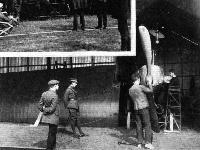 |
Журнал - Flight за 1912 г.
|
| THE MILITARY AVIATION TESTS. - Assembling machines under observation. The Martin Handasyde being assembled.
|
 |
Журнал - Flight за 1913 г.
|
| The new Martinsyde monoplane fitted with 120-h.p. Austro-Daimler engine. Mr. Gordon Bell is in the pilot's cabin.
|
 |
P.Lewis - British Aircraft 1809-1914 /Putnam/
|
| Martin-Handasyde Military Trials Monoplane re-engined with 120 h.p. Austro-Daimler.
|
 |
M.Goodall, A.Tagg - British Aircraft before the Great War /Schiffer/
|
| Harold Barnwell flew this Austro-Daimler powered Martin-Handasyde in the 1913 Aerial Derby.
|
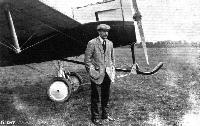 |
Журнал - Flight за 1913 г.
|
| Mr. Barnwell, who secured second place, with only a couple of minutes' interval, on the Martinsyde machine in the Aerial Derby.
|
 |
P.Lewis - British Aircraft 1809-1914 /Putnam/
|
| Martin-Handasyde 1913 Monoplane
|
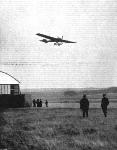 |
Журнал - Flight за 1912 г.
|
| Gordon Bell piloting the Martin-Handasyde mono, at Lark Hill, Salisbury Plain.
|
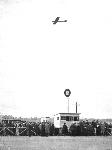 |
Журнал - Flight за 1912 г.
|
| The Vickers (Martin-Handasyde!!!) monoplane making a demonstration flight at Brooklands Aerodrome during the British Motor Cycle Racing Club's Meeting on Saturday last.
|
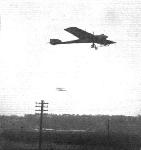 |
Журнал - Flight за 1912 г.
|
| The Martin-Handasyde monoplane, with Petre in charge, over Brooklands. In the distance is Sopwlth's biplane, with Hawker up, having a try for the Michelin Cup.
|
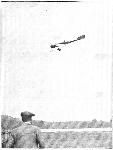 |
Jane's All The World Aircraft 1913 /Jane's/
|
| THE "MARTINSYDE" 120 H.P. TWO-SEATER, MILITARY TYPE MONOPLANE. Fuel Capacity for 6 HOURS' FLIGHT, at 85 miles per hour.
|
 |
Журнал - Flight за 1914 г.
|
| Pilot: Mr. V. Waterfall.
|
 |
Журнал - Flight за 1913 г.
|
| Pilot: Mr. H. Barnwell.
|
 |
Журнал - Flight за 1913 г.
|
| The 80-h.p. Laviator-Martin-Handasyde monoplane.
|
 |
Jane's All The World Aircraft 1913 /Jane's/
|
| MARTIN-HANDASYDE, UAS.
|
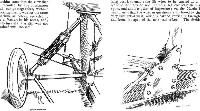 |
Журнал - Flight за 1912 г.
|
| The shock-absorbing device (on the left) on the Martin-Handasyde monoplane, showing the base of the central rigid mast to which the warp-wires are attached. The construction of the under-carriage is such that this mast is protected from landing shocks, which do not, therefore, derange any of the vital cable connections. On the right is a sketch illustrating the attachment of the supporting-struts to the front end of the skid, an example of simple yet sound construction.
|
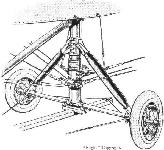 |
Журнал - Flight за 1913 г.
|
| The Martin-Handasyde landing gear and wing-warplng mechanism.
|
 |
Журнал - Flight за 1913 г.
|
| DETAILS OF THE MARTIN-HANDASYDE MONOPLANE. - (1.) The tail skid. (2.) The front skid. (3.) The construction of the wing spars. (4.) The landing gear and wing-warping mechanism. (5.) The anchorage of the chassis-staying cables. (6.) The fitting accommodating the cable which braces the wings against drift. It passes round the nose of the body. (7.) The klng-post tip. (8.) One of the strong cable fastenings that are used on the cables taking the main lift.
|
 |
Журнал - Flight за 1913 г.
|
| Wing section, to scale, of the Martin-Handasyde monoplane.
|
 |
Журнал - Flight за 1913 г.
|
| One of the M.H. main lift cable fastenings.
|
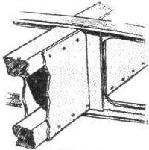 |
Журнал - Flight за 1913 г.
|
| The M.H. wing spar construction.
|
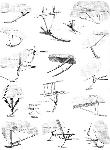 |
Журнал - Flight за 1913 г.
|
| AT OLYMPIA. - A study in tail-skids.
|
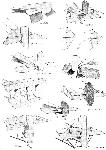 |
Журнал - Flight за 1913 г.
|
| A study in tails.
|
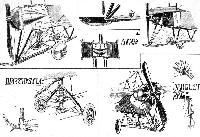 |
Журнал - Flight за 1915 г.
|
| Various types of single-skid undercarriages.
|
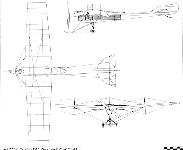 |
P.Lewis - British Aircraft 1809-1914 /Putnam/
|
| Martin-Handasyde Military Monoplane.
|
 |
Журнал - Flight за 1913 г.
|
| THE MARTIN-HANDASYDE MONOPLANE. - Front and side elevations and plan to scale.
|

































